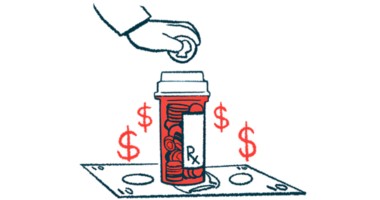In my quest for therapeutics, necessity is the mother of invention
I'm using virtual reality to find solutions in the realm of Parkinson's

In my columnist profile, I describe myself as a “patient research scientist,” although I’m not a real scientist (and I’m not patient). This description probably applies to most people with neurological disorders, as we’re constantly searching for new therapies that might work. And if you’re like me, you need to test them to learn for yourself. If the desired treatment is not readily available, we sometimes find alternative ways to gain access.
Because I couldn’t find a multisensory (audio-visual-tactile) pulse generator as a therapeutic option for my Parkinson’s disease, I started developing a spatial computing app for the Apple Vision Pro. It’s been quite a journey over the past couple of years. What began as a DIY project in the “lab” of my basement evolved into a collaboration with neurology researchers at our local medical center and the engagement of a student programming team from the local institute of technology.
We could compare this intense need to create something with the story of Louis Braille. Blinded at the age of 3, he became frustrated as he grew up because he couldn’t read or write. No one else had a good solution, so he created a better way out of necessity.
From proof of concept to prototype
Thanks to the incredible support of my family and friends, even though I didn’t feel ready, I was encouraged to elevate our proof of concept to the next level. If the virtual reality system works as I believe it will, we want more than just one DIY model; we want a commercialized solution to help as many people as possible.
So I hired a professional design and technology firm with deep expertise in spatial computing and immersive user experience design. This initiative leverages haptic feedback along with visual and audio stimuli, and we’ve also partnered with a design house with strong competency in haptics and prototyping. They’re developing the “glove” components, assembly, and firmware for integration with the Apple Vision Pro app.
We’re confident in our system designs and frameworks. However, our biggest question revolves around the best algorithm. What is the optimal mix of parameter settings and training-session protocols? It’s likely different for each individual and needs to be calibrated over time. It shouldn’t be a proprietary type of “secret sauce.”
As a result, our platform aims to provide a wide range of functionalities and customization options to facilitate testing different formulas for success. We want to promote open-source collaboration to accelerate progress.
Natural sensory pathways
My recent column titled “Thoughts on broadening Parkinson’s stimulation treatments” asked the following question: “Could therapeutic patterns be delivered through our sensory-signaling pathways, instead of using implanted electrodes with [deep brain stimulation] or applied energy fields with traditional [noninvasive brain stimulation]?” I believe so.
However, we cannot currently make any claims about therapeutic results and aren’t initially promoting our work as a medical device approved by the U.S. Food and Drug Administration. It’s being developed as a sensory-training, general wellness product to accelerate our go-to-market timeline. Our first fully functional prototypes should be ready by September.
As I discussed back in February, patients and users must become more central to the solution process and gain greater control. We need the freedom to test various training methods to learn for ourselves. After all, we have a critical necessity for a cure. No one else has a viable solution. This situation is not dissimilar to why Braille created his code as a means for people who are blind to read and write. Let’s be the ones who create a better way.
Note: Parkinson’s News Today is strictly a news and information website about the disease. It does not provide medical advice, diagnosis, or treatment. This content is not intended to be a substitute for professional medical advice, diagnosis, or treatment. Always seek the advice of your physician or another qualified health provider with any questions you may have regarding a medical condition. Never disregard professional medical advice or delay in seeking it because of something you have read on this website. The opinions expressed in this column are not those of Parkinson’s News Today or its parent company, Bionews, and are intended to spark discussion about issues pertaining to Parkinson’s disease.








Rick Albertson
I developed gloves my brother with Parkinson’s uses which seem to help. They are based on a small Stanford study. I’d love to exchange notes.
Rob Cleminson
I am interested to learn more about this technology. I am currently involved in the development of an app that uses the haptic vibrations in both the Apple Watch and Smart OS(Android) watches to help relieve a lot of PD and other Neurological Symptoms by tapping/vibrating at a certain BPM.
John Wills
I’m a retired M.D. with onset of PD at age 75. Now 83, I continue to do relatively well. I follow the PD literature closely and have participated as a subject in several PD-related trials.
—I’m interested in research into this disorder and am frustrated by the slow pace of progress in understanding PD and its treatment and prevention.
I‘d be interested in participating in trials of the devices you develop. Good luck. Jack Wills
NIcholas Coldrick
This sounds fascinating. Apologies if I overlooked it, but is there a website I and monitor or a mailing list I can belong to in order to stay abreast of developments?